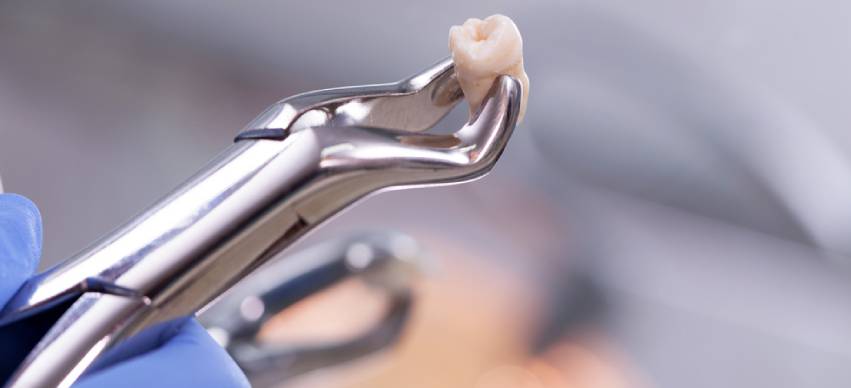Nanoparticle Therapy – An Emerging Cancer Treatment
5 Min Read


Do you experience discomfort when chewing food? Do you feel toothaches coupled with a headache that feels like your head will blow off at any moment? If it does, you might need to visit your dentist as soon as possible. That’s probably a sign of a severe dental problem that may require immediate extraction.
Tooth extraction is the process of removing severely damaged permanent teeth. It’s common for adults, especially those who have not practiced healthy dental and oral hygiene. Here are some of the most common reasons why someone needs tooth extraction:
If you find your teeth painful and excruciating these past few days, visit any dental clinics in your area or check out https://www.grovecitydentalofblackfoot.com/extractions/ for more information.
Once the damaged tooth has been removed, the next thing to do is to allow the extraction site to heal and recover. In this article, you’ll learn the aftercare treatment for faster healing. But before you do so, it’d be best to understand how tooth extraction works.
Before the affected tooth is extracted, the dentist or oral surgeon looks at it and its surrounding gums. They will also use X-rays to find out if bone levels have been damaged to an extent.
In addition, make sure to inform your dentist about all the medications and supplements you’re currently taking. Once everything is taken accordingly, the next thing your dentist will discuss is dental sedation.
Sedatives are common in dental procedures. They’re an ideal option for people who are extremely anxious and nervous when visiting a dentist, helping patients be more comfortable during dental appointments.
Below are the three common sedatives your dentist may use to soothe you and make you feel comfortable.
On other occasions, the dentist may provide general anesthesia, especially when it comes to complex dental procedures, such as corrective jaw surgery and facial reconstruction.

Initially, the dentist will give you local anesthesia to numb the extraction site and the surrounding gums. Then, the dentist will gently loosen the affected tooth and carefully extract it from the base socket (where the tooth is naturally planted) using specialized dental equipment.
In other cases, the dentist might need to make a small cut around the gums so that the affected tooth gets loosened. This is especially necessary for teeth that have been severely decayed or have broken off the gums.
Once the affected tooth is removed, the dentist will clean and disinfect the base socket. Sometimes, they may attach a bone graft to prevent bone recession within your jaw. Lastly, the dentist will stitch the extraction site to close the wound and promote faster recovery.
Removing molars or impacted teeth is more complicated than extracting other teeth. To fix the issue, the dentist will need to make a small cut in the bone and gum tissue that hides the teeth. Then, they’ll loosen the teeth by rocking them back and forth until they’re easy to lift.
If the affected tooth is difficult to remove, some pieces can be extracted. Usually, complicated surgical procedures might be necessary under general anesthesia.
Once the molar or impacted tooth has been removed, the blood will clot around the base socket. Then, the dentist will stop the bleeding with a gauze pad (a few stitches may be required if the bleeding is too much due to large open wounds).
Aftercare may vary depending on some factors. These include the tooth extracted because other types, especially with deeper roots like molars, take more time to heal completely. However, most patients find that the pain gradually reduces after three or four days.
One of the most important things to keep in mind during the aftercare is the blood clot that forms within the extraction site. Taking care of this is crucial to the recovery process. Also, it prevents complicated issues like dry sockets.
Here’s a 10-day care timeline after the extraction process:
In some cases, dentists need to remove more than one tooth under the same operation. When undergoing multiple extractions, the dentist often requires general anesthesia, not local anesthesia. This will put the patient in an unconscious state throughout the entire operation.
The dentist can also provide them with additional instructions after the extraction. For example, patients shouldn’t eat specific foods after the procedure to promote healing. Once done, the patient will need someone to drive them home due to the effects of general anesthesia.
It’s not easy to care for multiple extraction sites, especially if they can be found in different areas. The dentist may require patients to get a follow-up checkup shortly after the procedure to monitor the complicated condition.
Dentists may also ask you to use clotting aids, small objects made from natural sources that promote blood clotting. These materials are broken down and absorbed by the body over time.
Dentists often recommend wisdom teeth extraction as early as possible to prevent serious complications. However, keep in mind that the healing process of extracting wisdom teeth often takes much longer compared to removing regular teeth. This requires patients to leave work or school for a couple of days or until the wound is manageable or healed completely.
Extracting wisdom tooth often involves multiple extractions. This is especially true if its severely impacted, causing significant and irreversible damage to other surrounding teeth. If that’s the case, you’ll need general anesthesia instead of local anesthesia.
In most cases, dentists may help promote recovery by using different techniques, such as absorbable sutures and clotting aids. Although the process is complicated compared to regular tooth extraction, the aftercare process is similar. But it’s best to ask your dentist to be sure.
Experiencing pain is common after tooth extraction. However, there are simple home remedies that may help you relieve the pain throughout the healing process. These include:
Although tooth extraction is normal for adults, taking care of it can be a drag. This is especially true for teeth with severe cases, such as wisdom tooth extraction. Above is a comprehensive and detailed guide that can help you manage yourself after the procedure for faster healing and recovery. If there’s any problem during the recovery process, consult your dentist right away to identify and address the cause as quickly as possible.